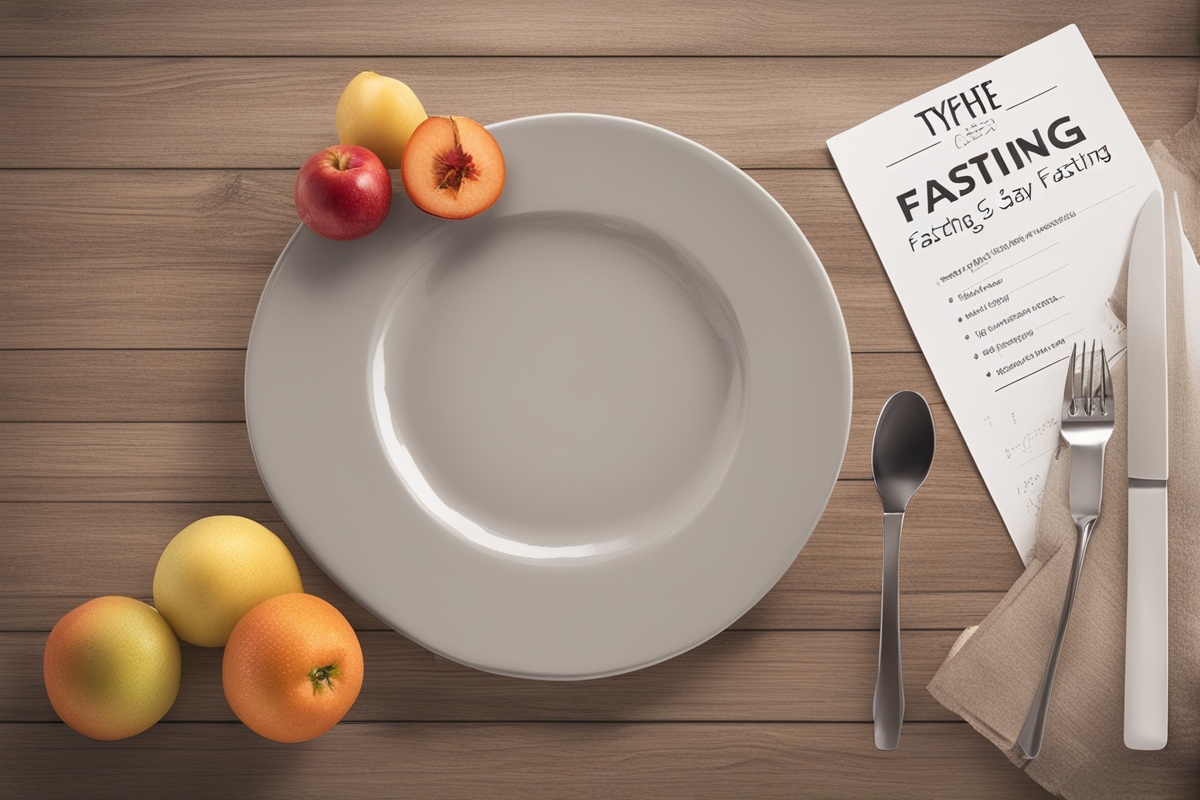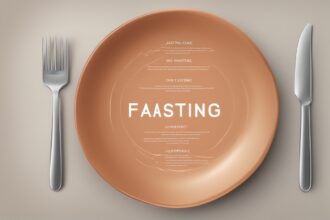Intermittent fasting (IF) has taken the health and wellness world by storm, and it’s not hard to see why. With promises of weight loss, improved mental clarity, and even a potential boost to longevity, this eating pattern has captured the attention of everyone from fitness buffs to busy professionals. But with so many approaches out there, how do you know which one’s right for you? In this deep dive into popular methods of intermittent fasting, I’ll break down the most common strategies, share personal insights, and give you practical tips to help you decide which method fits your lifestyle. Whether you’re a newbie or a seasoned faster, stick with me—there’s something here for everyone.
What Is Intermittent Fasting, Anyway?
Before we get into the nitty-gritty of the popular methods of intermittent fasting, let’s set the stage with a quick overview. Intermittent fasting isn’t a diet in the traditional sense; it’s more of an eating pattern. You cycle between periods of eating and fasting, focusing on when you eat rather than what you eat. The goal? Give your body a break from constant digestion, potentially tapping into fat stores for energy and triggering cellular repair processes like autophagy. Sounds fancy, right? But at its core, IF is about simplicity and sustainability.
I first stumbled upon IF a few years back when I was struggling to shed a stubborn 10 pounds. I’d tried everything—low-carb, calorie counting, you name it—but nothing stuck. A friend suggested fasting, and though I was skeptical (I mean, skipping breakfast felt like a crime!), I gave it a shot. The results surprised me, and I’ve been experimenting with different methods ever since. Let’s explore the most popular ones so you can find your own “aha” moment.
The 16/8 Method: The Beginner’s Favorite
Hands down, the 16/8 method is one of the most popular methods of intermittent fasting, especially for those just dipping their toes into the IF pool. It’s straightforward: you fast for 16 hours and eat during an 8-hour window each day. Most people do this by skipping breakfast, eating their first meal around noon, and finishing their last bite by 8 p.m. Easy peasy, right?
What makes 16/8 so approachable is its flexibility. You can tweak the eating window to suit your schedule—maybe 10 a.m. to 6 p.m. works better if you’re an early riser. When I started with 16/8, I loved how it synced with my natural hunger patterns. I wasn’t ravenous in the morning anyway, so pushing my first meal to midday felt natural. Plus, research suggests this method can help with weight loss and improve insulin sensitivity, which is a win for anyone looking to stabilize blood sugar levels. A 2018 study in the journal Nutrition and Healthy Aging even found that 16/8 fasting led to significant fat loss in participants without cutting calories drastically.
Pro tip: Start slow. If 16 hours feels daunting, try a 14/10 split for a week or two. And don’t forget to hydrate during the fasting window—black coffee or plain water are your best friends here. Curious about how IF impacts weight loss specifically? Check out our detailed guide on Intermittent Fasting for Weight Loss.
The 5:2 Diet: Fasting with a Twist
Next up among the popular methods of intermittent fasting is the 5:2 diet, sometimes called “fasting light.” With this approach, you eat normally for five days of the week and restrict calories to about 500-600 per day on the other two days. These low-calorie days don’t have to be consecutive, so you could fast on Monday and Thursday, for instance, and live your life as usual the rest of the week.
I’ve tried 5:2 during particularly hectic months when a daily fasting schedule felt like too much commitment. It’s a great middle ground if you’re not ready to fast every day but still want the benefits. Imagine you’re juggling a demanding job and family responsibilities—slipping in two low-calorie days can feel like a sneaky way to prioritize health without overhauling your routine. Studies, like one published in the British Journal of Nutrition, have shown that 5:2 can be just as effective as daily calorie restriction for weight loss and may even improve markers of heart health.
One downside? Those fasting days can be tough if you’re not prepared. My first attempt was a disaster—I didn’t plan my meals and ended up hangry by noon. Lesson learned: Stock up on low-calorie, high-volume foods like veggies and broth to keep hunger at bay. Want to know more about balancing fasting with nutrition? Head over to our post on Fasting and Nutrition.
Eat-Stop-Eat: The 24-Hour Challenge
For those ready to level up, Eat-Stop-Eat is another standout among popular methods of intermittent fasting. Created by Brad Pilon, this method involves a full 24-hour fast once or twice a week. You pick a day, stop eating after dinner, and don’t eat again until dinner the next day. It’s intense, no doubt, but the payoff can be worth it for some.
I’ll be honest—my first 24-hour fast felt like climbing a mountain. By hour 18, I was dreaming of pizza. But something clicked around hour 20; I felt a strange sense of clarity and energy. Proponents of Eat-Stop-Eat swear by its ability to reset your relationship with food, and there’s evidence it can reduce inflammation and promote fat loss. Brad Pilon himself cites studies showing that short-term fasting doesn’t slow metabolism as much as chronic calorie restriction, which is a common myth.
That said, this method isn’t for everyone. If you’ve got a history of disordered eating or feel lightheaded during long fasts, steer clear. Always listen to your body. And if you’re curious about the science behind fasting and metabolism, don’t miss our article on Fasting and Metabolism.
Alternate-Day Fasting: The Heavy Hitter
Alternate-day fasting (ADF) is exactly what it sounds like—you alternate between “feast” days, where you eat normally, and “fast” days, where you either eat nothing or limit yourself to 500 calories. It’s one of the more rigorous popular methods of intermittent fasting, often used in clinical studies to test the effects of fasting on health markers like cholesterol and blood pressure.
ADF isn’t for the faint of heart. I gave it a whirl for a month and found the feast days liberating, but the fast days were a slog. Still, the results were undeniable—I dropped a few pounds and felt more in tune with my hunger cues. Research backs this up: a 2019 study in Obesity found that ADF led to greater weight loss compared to traditional dieting in some participants. But let’s keep it real—sustainability is the name of the game. If you’re miserable every other day, what’s the point?
My advice? Ease into ADF with modified fast days (think 800 calories instead of 500) and see how you feel. Pair it with a supportive community or accountability buddy to stay motivated. After all, fasting shouldn’t feel like punishment—it’s a tool, not a torture device.
Choosing the Right Method for You
With so many popular methods of intermittent fasting to choose from, how do you pick the winner? It boils down to your lifestyle, goals, and how your body responds. Are you someone who thrives on routine? The 16/8 method might be your sweet spot. Got a packed social calendar and can’t commit to daily fasting? Try 5:2 or Eat-Stop-Eat. If you’re all-in and love a challenge, ADF could be your jam.
Here’s what I’ve learned over the years: Start small, experiment, and don’t beat yourself up if a method doesn’t click. Fasting is personal. When I switched from 16/8 to 5:2 during a busy travel season, I worried I’d “fail” at IF. But guess what? Adapting to my circumstances kept me consistent, and consistency trumps perfection every time. Track how you feel—energy, mood, hunger—and adjust as needed. And always consult a healthcare provider if you’ve got underlying conditions like diabetes or are pregnant.
Final Thoughts and Tips for Success
Intermittent fasting isn’t a one-size-fits-all solution, but the variety of popular methods of intermittent fasting means there’s likely an approach that suits you. Whether you’re drawn to the simplicity of 16/8, the flexibility of 5:2, the intensity of Eat-Stop-Eat, or the structure of ADF, the key is to make it work for you. Stay hydrated, prioritize nutrient-dense foods during eating windows, and don’t ignore your body’s signals. Fasting should empower you, not drain you.
One last nugget from my journey: Pair fasting with mindfulness. I started journaling during my fasts, noting how I felt physically and emotionally. It helped me separate true hunger from boredom or stress—game-changer! So, why not give one of these methods a try? You might just uncover a healthier, happier version of yourself waiting on the other side.
References
- Nutrition and Healthy Aging: Effects of Intermittent Fasting on Weight Loss and Cardiometabolic Health
- British Journal of Nutrition: Intermittent Fasting and Weight Loss
- Obesity: Alternate-Day Fasting for Weight Loss and Cardiometabolic Health
This content is for informational purposes only and not a substitute for professional advice.






